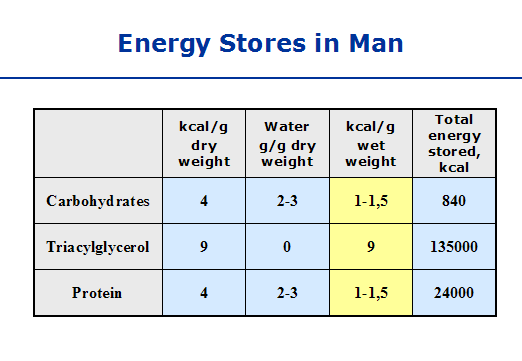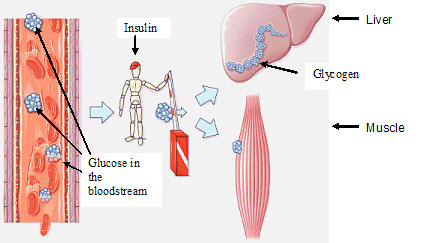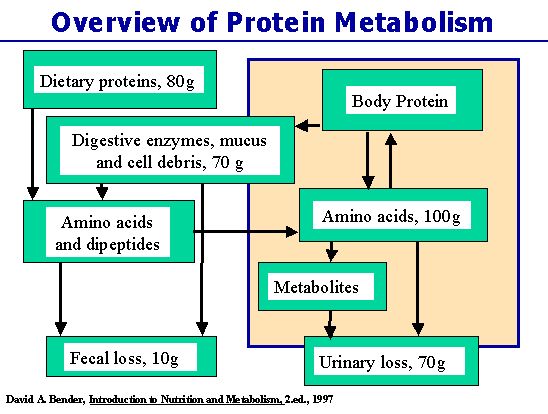 Many scientists might claim that the human body is largely uncharted territory. We know so much about how we function, but what we know is a drop in the bucket compared to what is not yet discovered. A body is not as large as the unexplored universe, nor deeper than the deepest parts of the ocean – it’s right here in front of us, and we still can’t figure it out.
Many scientists might claim that the human body is largely uncharted territory. We know so much about how we function, but what we know is a drop in the bucket compared to what is not yet discovered. A body is not as large as the unexplored universe, nor deeper than the deepest parts of the ocean – it’s right here in front of us, and we still can’t figure it out.
Needless to say, some of the more recent discoveries about our biochemistry are still not quite common knowledge — nutrition junkies and doctors could tell you a lot about yourself that you’d be surprised to hear. Even though we could pick one of millions of topics to discuss concerning the workings of human metabolism, today we’ll focus in on a pretty simple cause-and-effect relationship about food.
Let’s start simple: is a slice of pizza different than a steak? Obviously, they’re different foods, but how about nutritionally? Do the calories in pizza and steak get treated the exact same way once they pass through your lips and into your stomach? The short answer is no; the long answer is “not even a little, and here’s why:”
Everything we have ever eaten as a species comes in a mixture of three basic components: fats, proteins, and carbohydrates. You know these by sight — butter is pure fat, a lean steak is pure protein, and spaghetti or toast are both pure carbohydrate. Each of these foods provides energy to you in a different way, because your body has to break down them down into their constituent molecules. A steak is made of long chains of amino acids, and a fully digested steak is nothing more than that same chain cleaved at every link in the chain. A piece of bread starts out as long chains of sugars, but when it hits your bloodstream, as all the food we eat does, it does so as individual molecules of glucose, or fructose, or whatever kind of carbohydrate it’s made from.

Let’s focus in now on the carbohydrates: they’re made of little more than carbon, hydrogen, and oxygen — in fact, by definition these are their only constituents. We now know that every carbohydrate you eat is broken down into individual pieces, called monomers, when it gets digested. If you eat a potato, a slice of toast, or a bowl of spaghetti, the end result is nearly identical – the amount of free glucose in your body rises. Take a look at the chart below which shows when and where in the body each type of food molecule gets digested – notice how they all have their own mechanisms of being incorporated into your body.

So we can see that the three types of food molecules — fats, proteins, and carbohydrates — are digested very differently from each other. On the other hand, if you consider only the carbohydrates, each of the many kinds of carbohydrates are digested in essentially the same way.
Carbohydrates are great because they’re reassembled as something called glycogen, which is short-term storage for your body. If you’ve ever had to lift up a heavy box (put your back into it, lift with your knees, etc., thanks for the advice Mom!), spring across the parking lot in pouring rain, or do 10 push-ups in ten seconds, then you’ve used glycogen. It’s the only kind of food molecule we can put to work instantly because it gets stored in our muscles, which use it to fuel our burst-type motions. It’s also stored in the liver if our muscles get too full of it. After all, we only have so much space in every cell for glycogen, and if we fill up our muscles, we’ll need a repository somewhere else.
 Here we can see that ATP, which is the main energy “currency” of the body (meaning, all incoming energy sources eventually end up as ATP so they can be spent universally in the body, like having a credit card instead of Canadian dollars!) is made from many sources including gkycogen and fatty acids. Notice how quickly glycogen is turned into ATP compared to fatty acids — over five times the speed! When you’re in a fight-or-flight situation, you want the fastest possible mode of energy generation, and glycogen is the go-to guy.
Here we can see that ATP, which is the main energy “currency” of the body (meaning, all incoming energy sources eventually end up as ATP so they can be spent universally in the body, like having a credit card instead of Canadian dollars!) is made from many sources including gkycogen and fatty acids. Notice how quickly glycogen is turned into ATP compared to fatty acids — over five times the speed! When you’re in a fight-or-flight situation, you want the fastest possible mode of energy generation, and glycogen is the go-to guy.
Herein is the downside to carbohydrates: while they provide instant, easily accessible energy, it doesn’t last long. A few minutes of sprinting can wipe out your glycogen. But if you were a caveman running from an enemy tribe who had recently discovered how to use a bow and arrow, you can bet you’d be thankful for the burst energy carbohydrates can give you.
Let’s look at it from a slightly different angle — all carbohydrates are broken down into sugars. We already said carbohydrates break up into glucose or fructose, or whatever monomer it might be, but all of those monomers are sugars. If you were to go to the cabinet in your kitchen and weigh out an ounce of sugar and an ounce of spaghetti, you might be surprised to learn that your body treats them both identically when it comes to getting energy out of them. A slice of bread? A tablespoon of sugar is roughly 12 grams of carbohydrates – think of it as 12 grams of sugar. The average bread slice has 36 grams of carbohydrates – think of it as 36 grams of sugar. They look and taste different, but because they’re both sugars, they’re both digested and used the same way by your body.
 We just mentioned that you store glycogen (remember, that’s the storage form of these sugars), but you can only hold so much. Picture a big bucket with a tiny hole in the bottom — if you use your garden hose to fill the bucket half-way full, it will slowly drain out over time, and in a few hours or days the bucket will be empty. On the other hand, if you fill it up to capacity and then continue to spray water over it, the water will overflow from the top. Our glycogen stores work the same way — we can only hold so much, and we slowly burn it over the course of a day to fuel our brain and our motion. In the chart to the right we can see that we store 840 total kilocalories as glycogen at any given time. Dividing this by 4 tells us the number of grams of glycogen that is our maximum – it’s about 210 grams, and we have to add an additional 4 times this amount to account for the water weight associated with storing glycogen. This is roughly 1000 grams, or 2 pounds of quick energy!! Our glycogen bucket holds almost nothing compared to our fat stores, which, in this chart, account for about 66 pounds! Compare that to the 2 pounds for glycogen; fat is by far the most abundant energy source we have, and it’s a shame we can’t utilize it more efficiently.
We just mentioned that you store glycogen (remember, that’s the storage form of these sugars), but you can only hold so much. Picture a big bucket with a tiny hole in the bottom — if you use your garden hose to fill the bucket half-way full, it will slowly drain out over time, and in a few hours or days the bucket will be empty. On the other hand, if you fill it up to capacity and then continue to spray water over it, the water will overflow from the top. Our glycogen stores work the same way — we can only hold so much, and we slowly burn it over the course of a day to fuel our brain and our motion. In the chart to the right we can see that we store 840 total kilocalories as glycogen at any given time. Dividing this by 4 tells us the number of grams of glycogen that is our maximum – it’s about 210 grams, and we have to add an additional 4 times this amount to account for the water weight associated with storing glycogen. This is roughly 1000 grams, or 2 pounds of quick energy!! Our glycogen bucket holds almost nothing compared to our fat stores, which, in this chart, account for about 66 pounds! Compare that to the 2 pounds for glycogen; fat is by far the most abundant energy source we have, and it’s a shame we can’t utilize it more efficiently.
As for glycogen, we can refill the energy bucket by eating ice cream, bread, or pasta. But say you go to town one night and have 5 bowls of pasta for dinner — you’ve given your body more glycogen than it can store in your muscles and liver. What happens then?
Remember how we said above that the food you eat gets transported around in your bloodstream? All the carbohydrates (they’re now individual sugar molecules) are circulating around your blood, knocking on every door to see if there’s extra room in the club for one more partygoer. If every muscle and liver cell is already jam-packed, these sugar cells have no choice but to continue the circuit around your body. But there’s a catch here – high blood sugar is toxic and can easily kill you. Your blood needs very specific conditions to function well. But give it a true emergency like an excess of sugar, and it has to do something drastic, or you’re going to have some serious health issues, like being killed to death.

Thankfully, our bodies are smart. Any extra sugar is swept up by a hormone called insulin –– you’ve probably heard of it in relation to diabetics, and yes, that’s related to this — and insulin does a great job of moving sugar from your bloodstream into cells by changing it into something else. It’s a process called de novo lipogenesis, and it converts sugar into fat. If you fill up your glycogen bucket and it begins to overflow, your body has no choice but to pack it into your cells as body fat. The reason for this is pretty simple: fat cells have pretty much unlimited storage, while we already said that glycogen is very limited in its capacity. If you go without a meal for 12 hours or so, you can be pretty certain you have very little glycogen left to use. On the other hand, fat cells can expand almost indefinitely, so any extra energy is going to go to them and packed away for a rainy day.
What’s the moral here? If you overfill your glycogen stores, any excess is converted to body fat in de novo lipogenesis.
What about protein and fat? Proteins are broken down into amino acids, which are then shuttled around your bloodstream and used in your cells to make up pretty much everything you can see when you look at someone — skin, hair, eyes, muscles, and more. Say you go out for dinner tomorrow and eat 12 sirloin steaks. You’ve given your kidneys a workout, and you’ve given your body more protein than it currently needs. Luckily, we can convert those amino acids into glucose, which can then be stored as glycogen. Do you see a potential problem here?

If your glycogen stores are already full, and you overdose on protein, the extra protein is first converted to glucose. Your cells respond with a hearty “we don’t need no glucose!” and then insulin is forced to do its job to prevent your high blood sugar from putting you into a coma. So now we know that an excess of carbohydrate or an excess of protein can pretty much lead to the same result.
A similar story goes for fat, if, for example, your breakfast happens to be two sticks of butter. You have a lot of long-term storage all at once, and chances are very good that you’ll pack it away as body fat until you really need it.
So if all three types of food molecules can potentially end up as fat, doesn’t that contradict the idea that they’re all digested differently? Well, only if you’re considering excesses — too much of anything and your body has to deal with it accordingly. You’ve only got so many kinds of energy storage in your body — glycogen, body fat, and even proteins can be metabolized if you haven’t had a meal in a few days. The idea here is that you’ve got a bucket full of glycogen that you can fill and empty over time, but you’ll ideally never want it to overflow. It can definitely go empty, and that’s not really problem — if you run out of glycogen, your body starts moving fat out of its 66 pounds of fat cells to use for energy instead, though there is a short transition period that can leave you feeling fatigued.
The concept of glycogen storage is one that many people may not be aware of, but it has everything to do with what we eat and more specifically, what kinds of the three types of food molecules we’re eating. Someone on a bread and pasta diet will be constantly refilling and overflowing their glycogen stores, and the result is body fat accumulation to prevent toxic levels of blood sugar. Next time you have a meal, try to guess what types of food molecules you’re ingesting — a mixture of proteins and fats, perhaps? Carbohydrates and proteins? The ideal meal is one that gives you all three types of food molecules, and not too much of any one of them. One hundred calories of bread and one hundred calories of steak are treated very differently in your body because they’re made of up different molecules, and therefore have different functions in helping to keep you alive.
Think about your glycogen stores next time you have a meal, and try to imagine whether bucket is half-full or half-empty, whichever way you prefer to think of it. We’re not as deep as the oceans or as large as the universe, but it’s processes like energy use that really make our jaws drop. It’s the moment we realize how complex we really are.
Pingback: I’ll take the pork fried rice, please | Your Brain on Sci